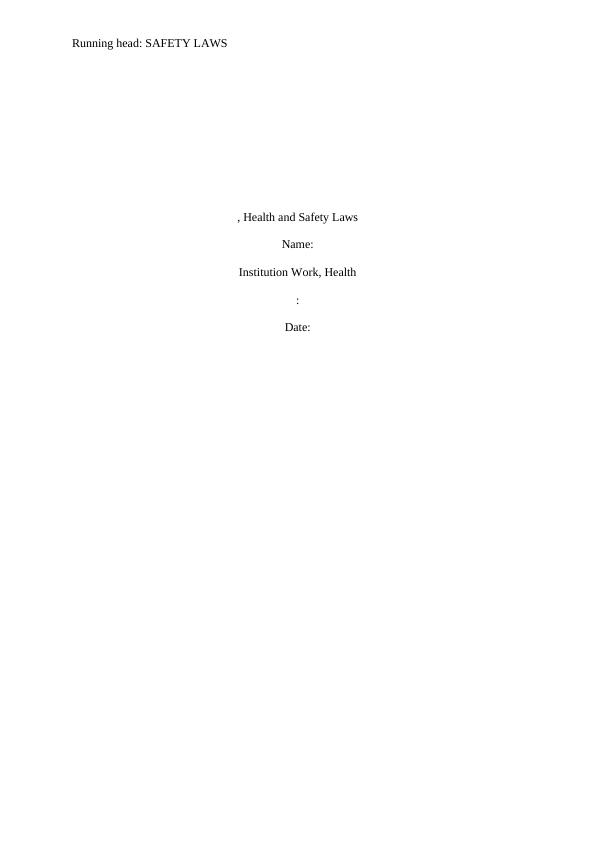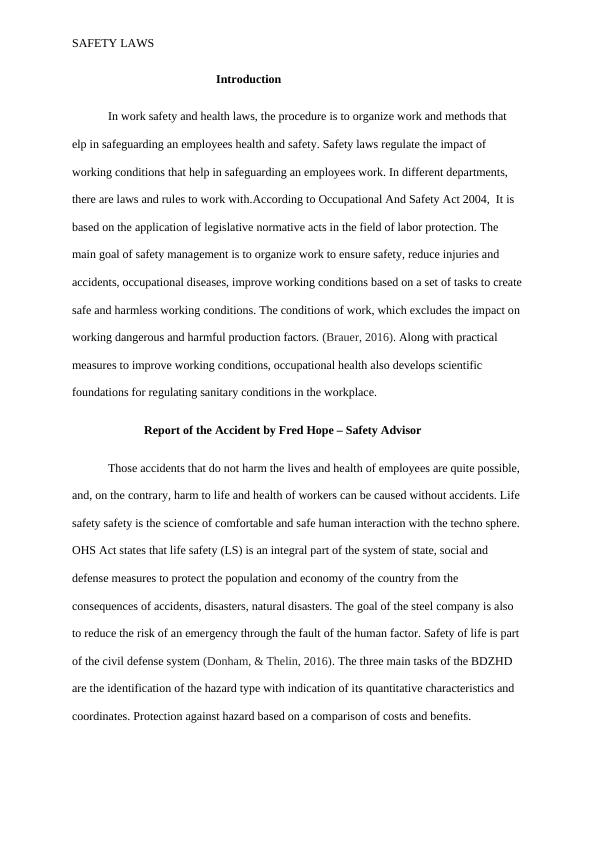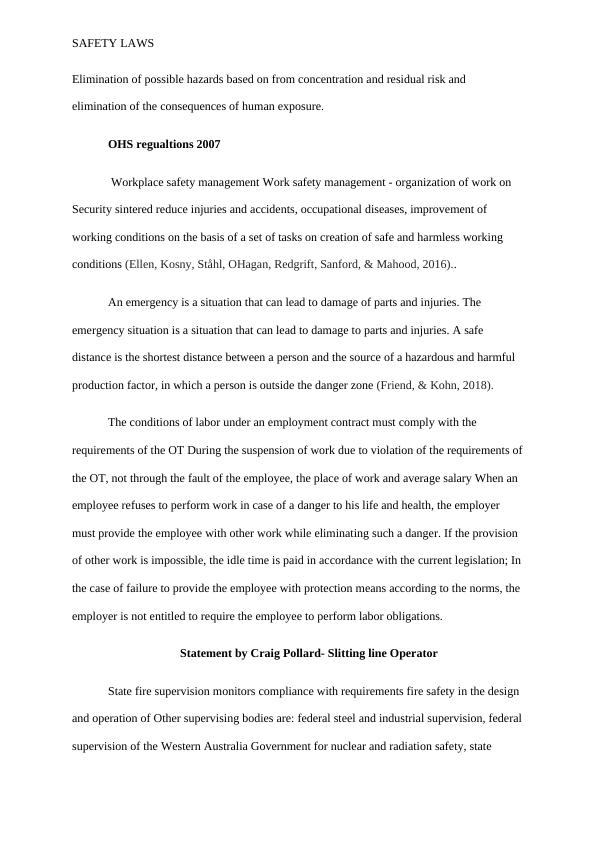Workplace Safety and Health Laws: Regulations and Responsibilities
Photographs of various parts and areas of a slitting machine accident scene.
11 Pages3092 Words192 Views
Added on 2023-06-03
About This Document
This article discusses workplace safety and health laws, regulations, and responsibilities for employees and employers. It covers the importance of safety management, the consequences of violating labor protection requirements, and the certification of workplaces. The article also includes statements from safety advisors and foremen at Do More Steel Manufacturing.
Workplace Safety and Health Laws: Regulations and Responsibilities
Photographs of various parts and areas of a slitting machine accident scene.
Added on 2023-06-03
ShareRelated Documents
End of preview
Want to access all the pages? Upload your documents or become a member.
Occupational Health and Safety Legislation
|19
|3375
|300
Contribute to Workplace Health and Safety
|8
|2784
|72
Occupational Health and Safety
|5
|963
|496
The adherence to the law for corporations
|15
|3544
|8
Managing Business Activities to Achieve Results in Business
|9
|1844
|140
THE OCCUPATIONAL HEALTH
|7
|1099
|20




